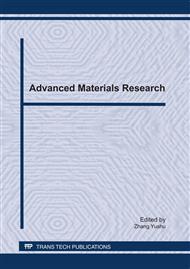p.320
p.325
p.330
p.334
p.339
p.344
p.349
p.354
p.358
Numerical Simulation of Residual Stress Distribution Produced by Shot Peening
Abstract:
The shot peening process is largely used for the surface treatment and forming. The residual stress distribution developed within material may induce distortion of the component. The residual stress formed during the shot peening process is simulated numerically. The elastic-plastic constitutive model is adopted to describe the plastic behavior of the target material. The influence of shot peen speed on residual stress and deformation distribution is discussed.
Info:
Periodical:
Pages:
339-343
Citation:
Online since:
February 2011
Authors:
Price:
Сopyright:
© 2011 Trans Tech Publications Ltd. All Rights Reserved
Share:
Citation:


